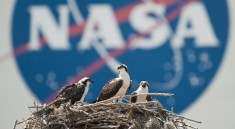OUTER SPACE | This image of a crescent Jupiter and the iconic Great Red Spot was created by a citizen scientist (Roman Tkachenko) using data from Juno’s JunoCam instrument.
You can also see a series of storms shaped like white ovals, known informally as the ‘string of pearls.’ Below the Great Red Spot a reddish long-lived storm known as Oval BA is visible.

The image was taken on Dec. 11, 2016 at 2:30 p.m. PST (5:30 p.m. EST), as the Juno spacecraft performed its third close flyby of Jupiter. At the time the image was taken, the spacecraft was about 285,100 miles (458,800 kilometers) from the planet.
JunoCam’s raw images are available at www.missionjuno.swri.edu/junocam for the public to peruse and process into image products.
JPL manages the Juno mission for the principal investigator, Scott Bolton, of Southwest Research Institute in San Antonio. Juno is part of NASA’s New Frontiers Program, which is managed at NASA’s Marshall Space Flight Center in Huntsville, Alabama, for NASA’s Science Mission Directorate. Lockheed Martin Space Systems, Denver, built the spacecraft. Caltech in Pasadena, California, manages JPL for NASA.
More information about Juno is online at http://www.nasa.gov/juno and http://missionjuno.swri.edu.







